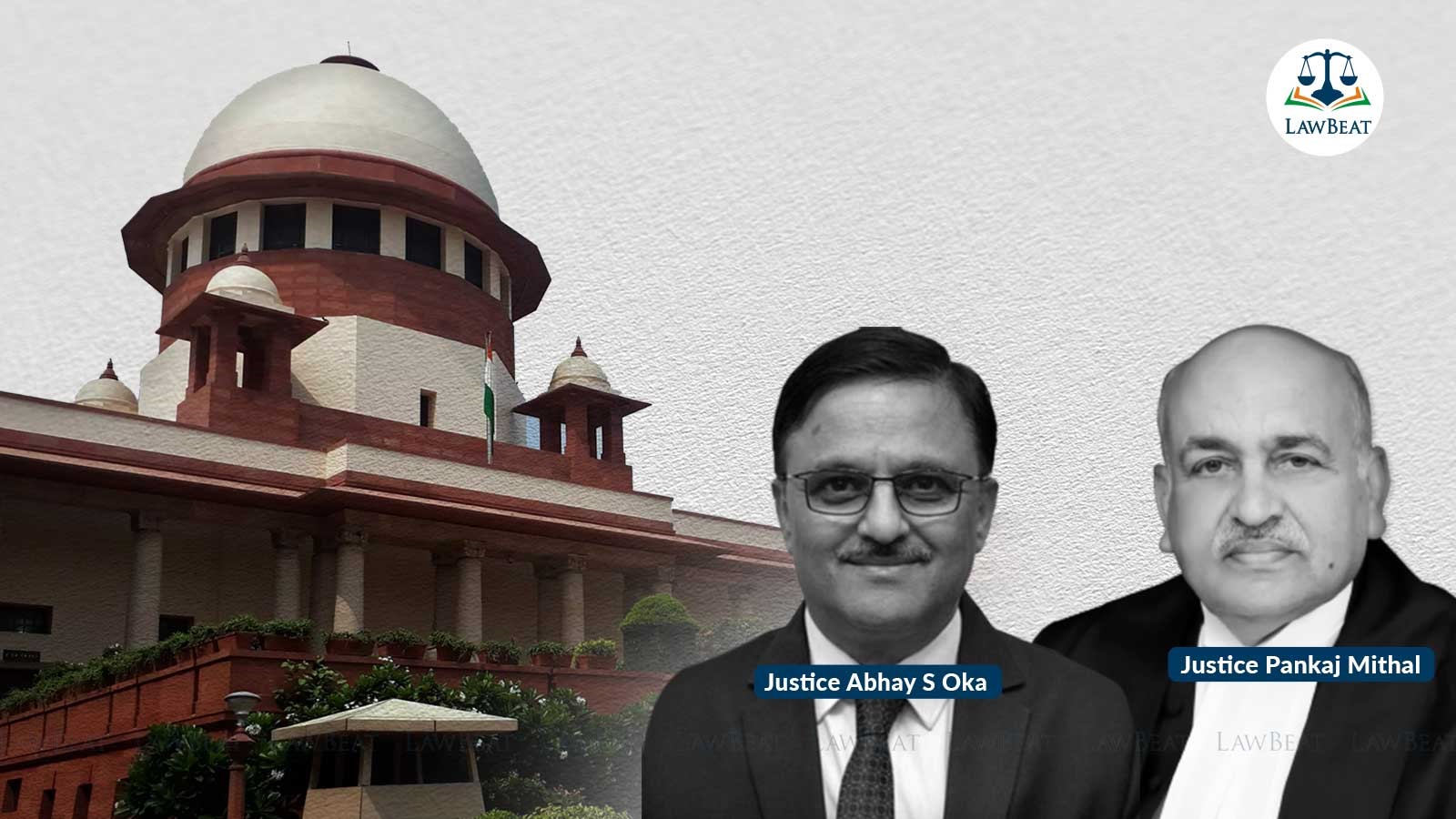Section 34 essentially introduces vicarious liability; can be invoked without overt act: SC

After examining the evidence, the SC bench said the appellants were together and were in the company of the accused no 3 and obviously, they acted in concert as they were carrying lathi, and the accused no 3, was moving with a musket and there was time available for the meeting of minds, thus, the existence of common intention will have to be accepted
The Supreme Court has on December 13, 2023 said vicarious liability brought in by common intention can be invoked against an accused, though he may not have committed an overt act, as it is not essential to prove prior conspiracy for it.
A bench of Justices Abhay S Oka and Pankaj Mithal emphasised that it is possible to form a common intention just before or during the occurrence.
"Section 34 essentially introduces vicarious liability. In a given case, where the offence is punishable under Section 302 of IPC, when the common intention is proved, but no overt act of assaulting the deceased is attributed to the accused who have been implicated based on Section 34, vicarious liability under Section 34 will be attracted," the bench said.
The court dismissed an appeal filed by Maheshwari Yadav and another person, Mannu Yadav, who along with accused Paro Yadav, were held guilty of killing Gholti Yadav in 1997.
In this case, the bullet was fired by the accused no 3, as a result of which, the deceased lost his life. The appellants were carrying sticks in their hands, and the accused no 3 had a musket which was used to fire the bullet at the deceased, the court noted, pointing towards deposition of witnesses.
"One of the grounds of challenge is the failure to examine other eye¬witnesses. However, in the facts of the case, a total of five eye¬witnesses were examined. It is not axiomatic that in every case where the eye¬witnesses are withheld from the court, an adverse inference must be drawn against the prosecution. The totality of the circumstances must be considered for concluding whether an adverse inference could be drawn," the bench said.
The court also noted it is true that the eye¬witnesses examined before the court were close relatives of the deceased. However, "That itself is no ground to discard their testimony. However, their evidence may require closer scrutiny," the bench said.
In a given case, when independent witnesses are available who are not connected with the rival parties and the prosecution omits to examine them by confining its case to examining related witnesses, an adverse inference can undoubtedly be drawn against the prosecution. When the evidence of the eyewitnesses is of sterling quality, an adverse inference need not be drawn. Quality is more important than quantity," the bench said.
One of the questions before the court was when the main accused, who is the author of the fatal injuries sustained by the deceased, was not charged with Section 34 of the IPC, whether conviction of the appellants can be sustained.
After examining the evidence, the court said the appellants were together and were in the company of the accused no 3. "Obviously, they acted in concert. The appellants were carrying lathi, and the accused no 3, was moving with a musket. There was time available for the meeting of minds. Thus, the existence of common intention will have to be accepted," the bench said.
"Hence, we find every justification for convicting the appellants by both the courts.
The court found no merit in appeal and directed the appellants to surrender before the trial court within one month to undergo the remaining sentence.
However, the bench ordered, "As and when they undergo the requisite period of sentence and qualify for consideration for a grant of permanent remission as per the applicable policy, the state government shall consider their case in accordance with the law."
